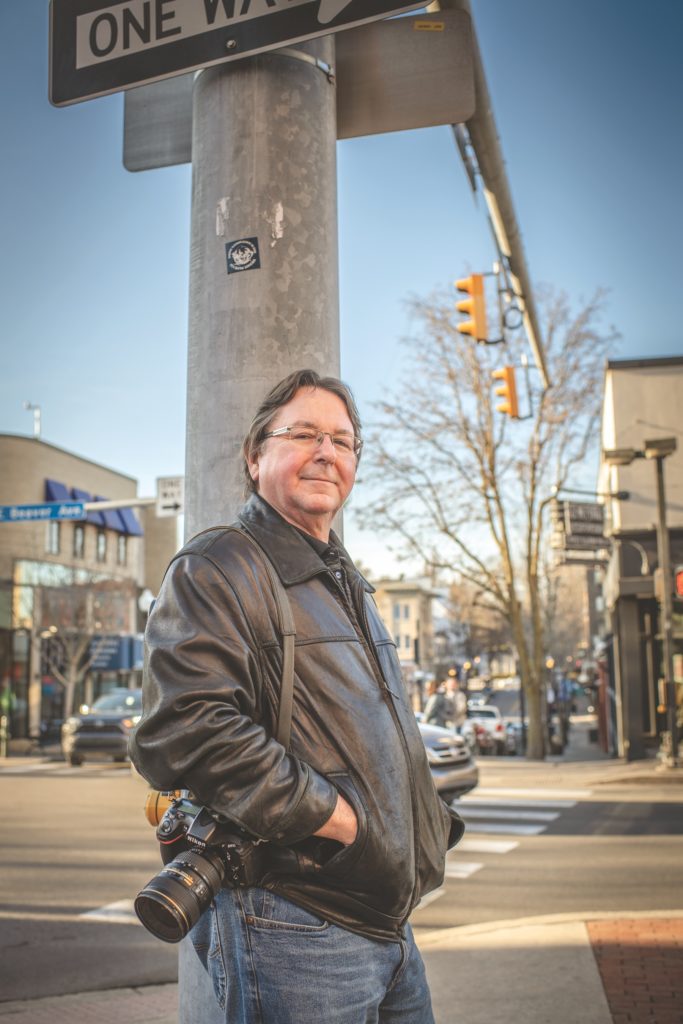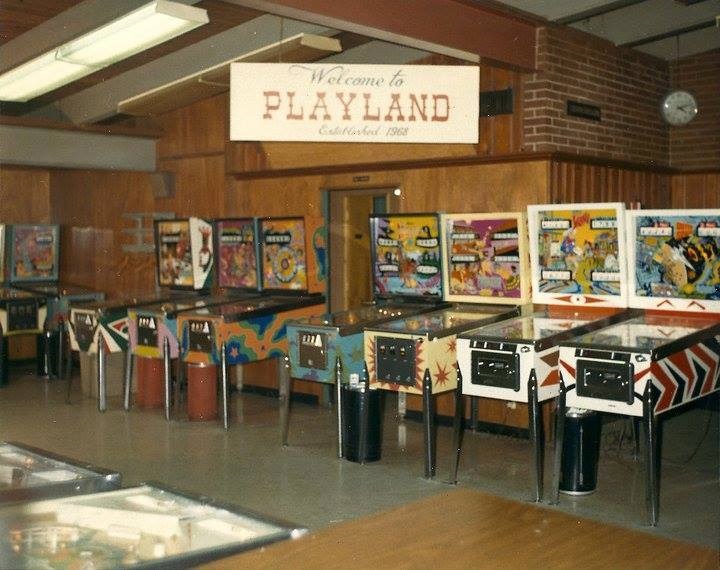On the popular TV series The Goldbergs, which centers on a middle-class family living in the Philadelphia suburbs, the narrator always opens the show with, “The year was 1980-something.”
The 1980s featured big hair, loud clothes, crazy trends, and heavy metal music. In Happy Valley, downtown State College was a college student’s dream.
Greg Woodman, a Penn State graduate and CEO of Affinity Connection in State College, recently published a book about the 1980s in Happy Valley entitled Why Penn State: Why the 1980s Gave Nittany Lions a Common Cause, Culture and Shared Values.
“State College was a beautiful college town,” Woodman says. “Downtown State College was the hub. Back then, students did not venture far. Students didn’t have cars. People lived on-campus and even if they lived off-campus, it was just a couple of blocks from downtown. It was crammed with students.”
And because it was jam-packed with students, businesses were located primarily along College and Beaver avenues.
There were plenty of bars, restaurants, arcades, and movie theaters. There was always something to do, something to see, and something going on. With that in mind, let’s hop in the DeLorean and venture back to the Big ’80s and remember some of the great places and events that once thrived, and in some cases still do – albeit a bit differently.
Playland
If you were a Penn State student in the 1980s, chances are that you spent a lot of time – and quarters – at Playland, an arcade that housed pinball machines and video games. If you had “Pac Man fever,” Playland was the place to be.
“I spent a lot of time at Playland,” Woodman recalls. “It was packed every night. I’d be at Playland every night. I played a lot of the old pinball machines. One of my favorites was Jacks Open, and Sinbad was one of my machines. I was able to master both, because if you hit certain scores, you’d get a free play.”
The pinball machines, of course, opened the doors to video games like Pong, Pac Man, Asteroids, Space Invaders, and the like.
Gene Steele managed Playland for nearly 30 years until it closed in 2003. Once the doors closed for good, the pinball and video games were sold at auction.
In a 2005 interview with Town&Gown, Steele talked about the success of Playland.
“We closed at 4 a.m. and re-opened four hours later at 8 a.m.,” he recalled.
A popular game like Asteroids would take in more than $700 per week.
“A bunch of quarters,” Woodman says, “was a lot of money for a college student.”
If you are trying to locate exactly where Playland was, just head for The Family Clothesline.
The movies
Happy Valley had a plethora of theaters in the ’80s.
“There were a lot of theaters downtown. This was certainly before the internet,” Woodman says with a laugh.
Students had a variety of screens to choose from. There was The Movies, located at 407 East Beaver Avenue. There was also Cinema 5, at 116 Heister Street. Of course, there was The State Theatre, a large one-screen theater at 130 West College Avenue. There was – gasp – even an adult theater called The Screening Room, at 127 South Fraser Street. Some old-timers may remember The Garden Theatre, located at 114 South Allen Street, or The Flick, a small theater at 129 South Atherton Street. Some of the theaters (The Screening Room, The Garden Theatre, The Flick) closed in the mid-’80s. Only The State remains. And it’s no longer a traditional movie house, though it does show films from time to time.
The Train Station
One of the most popular places to eat was The Train Station, a busy restaurant and bar along College Avenue between Garner and Sowers streets.
The Train Station earned its name because owner Chuck Herlocher filled the place with railroad memorabilia.
“The Train Station was a very nice restaurant. They sold ‘Hurricane’ drinks and had hard pretzels and the (dipping) mustard,” Woodman says. “It was a sit-down Cheers-type of bar/restaurant.”
The Train Station had a caboose out front; the cupola lookout perch was popular with couples seeking an intimate drink high above College Avenue. Students would also congregate in the “Train Yard” out back, Woodman says.
Over time, The Train Station grew, spawning a Whistle Stop bar and a sub shop called the Cattle Car.
“The Cattle Car subs and hoagies were a big part of it. It was a wonderful complex,” Woodman says. “Just a beautiful venue. I spent a lot of time there as well. The Cattle Car hoagies were just great.”
At The Train Station, diners could get a good meal at a reasonable price. Lasagna, chicken divan, and French onion soup were popular menu items.
Pat Little, who attended Penn State in the 1970s but honed his craft as a photojournalist in State College in the 1980s, has fond memories of The Train Station.
“I worked there as a bartender until I landed my first job as a photojournalist,” Little says.
He remembers the popular “Release Valve” drink. According to lore, the drink was 16 ounces of pineapple juice, 4 ounces of vodka, 2 ounces of white rum, and 2 ounces of grenadine. It was garnished with either a cherry or an orange slice, depending on who was serving it.
“It was a very popular drink,” Little says.
He recalls playing Pong (the very first video game) there.
“It had one of the first Pong video table games,” Little recalls.
Herlocher eventually closed The Train Station and it was demolished. The only thing that remains is the popular Herlocher’s Dipping Mustard, which is available at more than 7,000 stores in 35 states. According to its website, the mustard did indeed get its start at The Train Station.
“It all began in February 1978, at the Train Station Restaurant in State College, Pa. Our DIPP was a staple at the bar with pretzels and drinks. It was a unique specialty that became a big hit with the bar crowd. Soon, customers began asking us for dip to enjoy at home.”
The rest, as they say, is history.
Phi Psi 500
Ask anyone who attended Penn State in the 1980s about a signature event and chances are that you’ll get the same response: the Phi Psi 500.

According to Little, the event united Happy Valley like no other.
“The students today can’t imagine the togetherness … this brought the town and students together,” Little says. “A beer race that runs through the heart of State College. The police even had a team that ran in the race. It was just a fun, outrageous event.”
Charity, racing, and the pursuit of alcohol was the idea behind the Phi Psi 500, an annual 1.1-mile race and bar tour that took place downtown for more than 25 years.
The first-ever Phi Psi 500 was hosted by the fraternity Phi Kappa Psi. According to lore, that run consisted of six bars and countless costumes. Proceeds went to charity.
The first race took place in the spring of 1969, and the event began to grow throughout the ’70s. It reached its peak in attendance and popularity in the mid-1980s, with
revelers lining the streets of State College. However, by the late-1980s, the growth of the event began to raise concerns. State College Borough Council deemed it “out of hand.” By 1992, it was done.
The Phi Psi 500 typically took place in the spring.
“May was a magical month,” Woodman says. “We had trimesters back then, so we had a lot of time to have fun. The Phi Psi 500 was a big part of that.”
Little says there were “much fewer restrictions on everything.”
“We had a lot of fun.”
Penn State football
It is impossible to talk about the 1980s and ignore the impact Penn State football had on Happy Valley. The Nittany Lions won a pair of national championships – in 1982 and 1986. Those remain the only national titles Penn State has won.
While Woodman loves Penn State football and everything to do with it, there is one thing he said he would bring back – Penn State and Pitt playing on or near Thanksgiving weekend.
“What I’d like to have back from the ’80s is the annual Pitt-Penn State football game. That weekend and that Pitt game was just so much fun,” Woodman says. “That rivalry … I would give anything to have that as a regular last game of the season. There were bowl implications, national championship implications. There was nothing like it.”
That annual game went away once Penn State began competing in the Big Ten Conference in 1993. There were a few meetings in the early 1990s, but the November games ended in 1992. There have been several meetings between Pitt and Penn State since then, of course, but those took place in September.
“Beaver Stadium, Pitt Stadium, Three Rivers Stadium, it didn’t matter where, that was a big game,” Woodman says. “It would be [held] sometimes Thursday, sometimes Friday, sometimes Saturday. It was always on national TV. It was like a bowl game. The campus would re-open for it, students would come back for it. It was just a blast. Those were some amazing battles.”
According to Little, football was the backdrop for life in Happy Valley.
“Home football on Saturday was a big day for us. We rode our bikes to the stadium and just had a ball,” Little says. “To say I love State College would be a huge understatement. I owe everything I ever accomplished to this place called Happy Valley.”
Chris Morelli is a freelance writer who lives in Bellefonte. He enjoyed just a taste of Happy Valley in the 1980s, graduating from Penn State in 1991.




